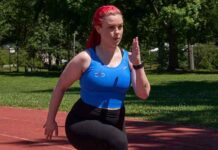Table of Contents
Exercise Daily Magazine: Goalkeeper injury prevention is essential due to the demanding nature of the position. Regularly incorporating specific exercises that target key areas such as core strength, shoulder mobility, agility, explosive power, and flexibility can help goalkeepers reduce their risk of injuries while improving their overall performance.
In this article, we will discuss the top 5 exercises for preventing football injuries for goalkeepers and how to include them in your training routine. By staying on top of these exercises, goalkeepers can stay injury-free and perform at their best.
The exercises we will discuss in this article are meant to serve as a guide and should be modified to fit each goalkeeper’s individual needs and abilities. It’s important to note that every goalkeeper has different needs, and it is important to consult with a professional trainer or physician before starting any new exercise routine.
Additionally, it’s important to remember that these exercises are not a substitute for good technique and proper training but rather a complement.
Incorporating these exercises into your training routine can improve your strength, mobility, and flexibility, reducing your risk of injuries and allowing you to perform at your best on the field. Always consult a professional trainer or physician before starting any new exercise routine, and ensure you warm up and stretch before and after training.
Learn how to get a soccer scholarship in the US.
Preventing Goalkeeper Injury through Core Strengthening
Preventing Goalkeeper injury starts with maintaining a strong core. By strengthening your core, you can improve your balance and reduce the risk of injury, which is crucial for goalkeepers who need to make quick and agile movements during the game.
Incorporating exercises such as planks, Russian twists, and dead bugs into your training routine can help achieve this goal by targeting the core muscles.
Incorporating Core Strengthening into Your Training Routine
- Planks target your core muscles, including your abs, obliques, and lower back. To perform a plank, begin by getting into a push-up position with your arms straight and your hands shoulder-width apart.Keep your body straight, engage your core and keep your hips level. Hold this position for 30 seconds to a minute, or as long as you can, without letting your form break down.In addition to targeting your core, planks can also help improve your posture and stability. By strengthening your back and shoulder muscles, planks can help you stand taller and move more easily.They can also be a great way to build endurance and improve your overall fitness level. As you progress, you can increase the time you hold the plank and try different variations, such as side planks or plank jacks.
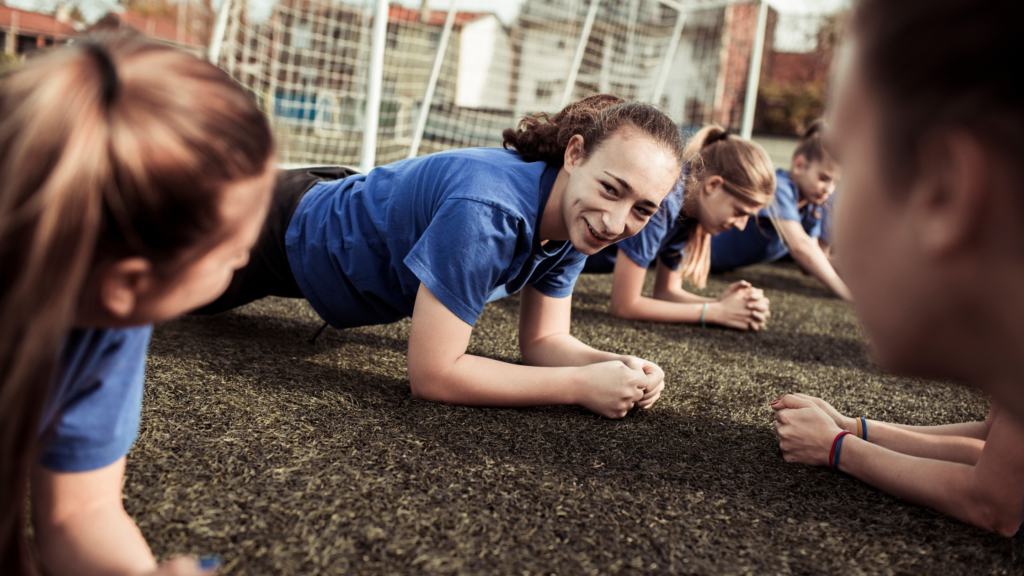
- Russian twists are another effective exercise targeting your core muscles, particularly your obliques. To perform a Russian twist:
- Sit on the floor with your knees bent and your feet flat.
- Lean back slightly and hold a weight, such as a dumbbell, kettlebell, or even a ball, with both hands.
- Twist your torso to the right, then to the left, making sure to engage your obliques as you twist.
- Repeat this movement for the desired number of reps.
As you progress, you can increase the weight of the object you hold or the number of reps to make the exercise more challenging.
You can also try different variations of the Russian twist, such as keeping your feet off the ground or holding a weight with one hand instead of two, to target your obliques in different ways.

-
Dead bugs are an effective exercise for targeting your lower abs and oblique muscles. To perform this exercise, begin by lying on your back with your knees bent at a 90-degree angle and your arms extended in the air.
Next, lower your right arm and left leg towards the floor, then return to the starting position. Repeat this movement on the opposite side by lowering your left arm and right leg. This exercise can be done in multiple repetitions to improve the strength of your lower abs and obliques.
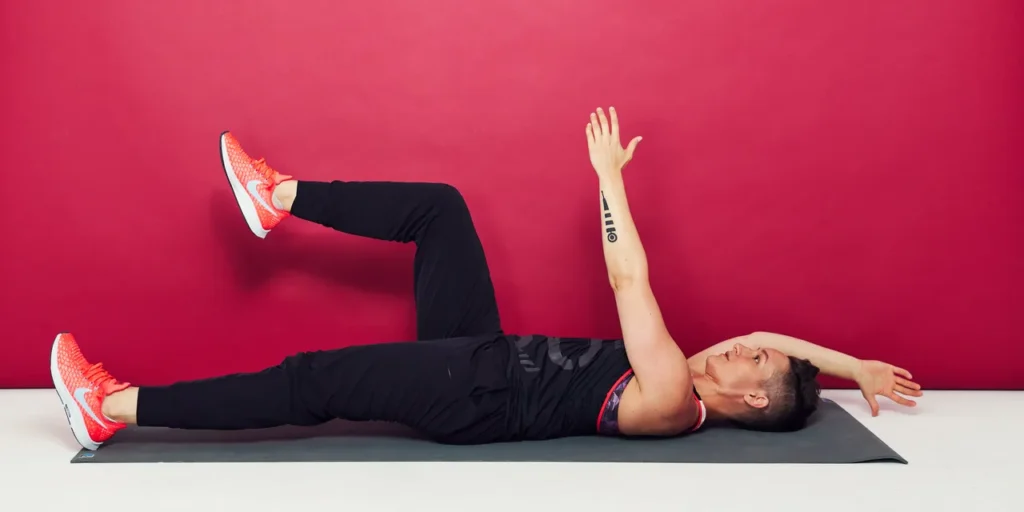
To effectively target your core, it’s important to include a variety of exercises and to challenge yourself as you progress. Aim to increase the duration of your planks and the difficulty of your Russian twists and dead bugs over time.
Avoiding Goalkeeper Injury through Improving Shoulder Mobility
Shoulder injuries are common among goalkeepers, especially due to the repetitive motions involved in diving and catching the ball. To prevent these injuries, it’s important to improve your shoulder mobility. Simple exercises such as arm circles, shoulder shrugs, and rotator cuff stretches can help improve your range of motion and reduce your risk of injury.
Incorporating Shoulder Mobility into Your Training Routine
- Arm circles are a simple exercise that can help improve your shoulder mobility. Stand with your feet shoulder-width apart and your arms at your sides. Slowly make small circles with your arms, then larger circles. Repeat for 10-15 reps in each direction.

-
Shoulder shrugs are a simple yet effective exercise that can help improve the mobility of your shoulders. The exercise is done by standing with your feet shoulder-width apart and your arms at your sides. You then slowly raise your shoulders towards your ears, hold for a moment, and then release.
It’s important to keep your arms straight and relaxed during the exercise and to avoid using momentum to lift your shoulders.
Repeat the exercise for 10-15 reps and aim for 2-3 sets. This exercise targets the trapezius muscle which is located on the upper back and shoulders. When you strengthen this muscle it can help improve posture, reduce pain, and also improve your overall strength.
In addition to shoulder shrugs, adding other exercises such as rotator cuff exercises and stretches can also help improve shoulder mobility and overall upper body strength.
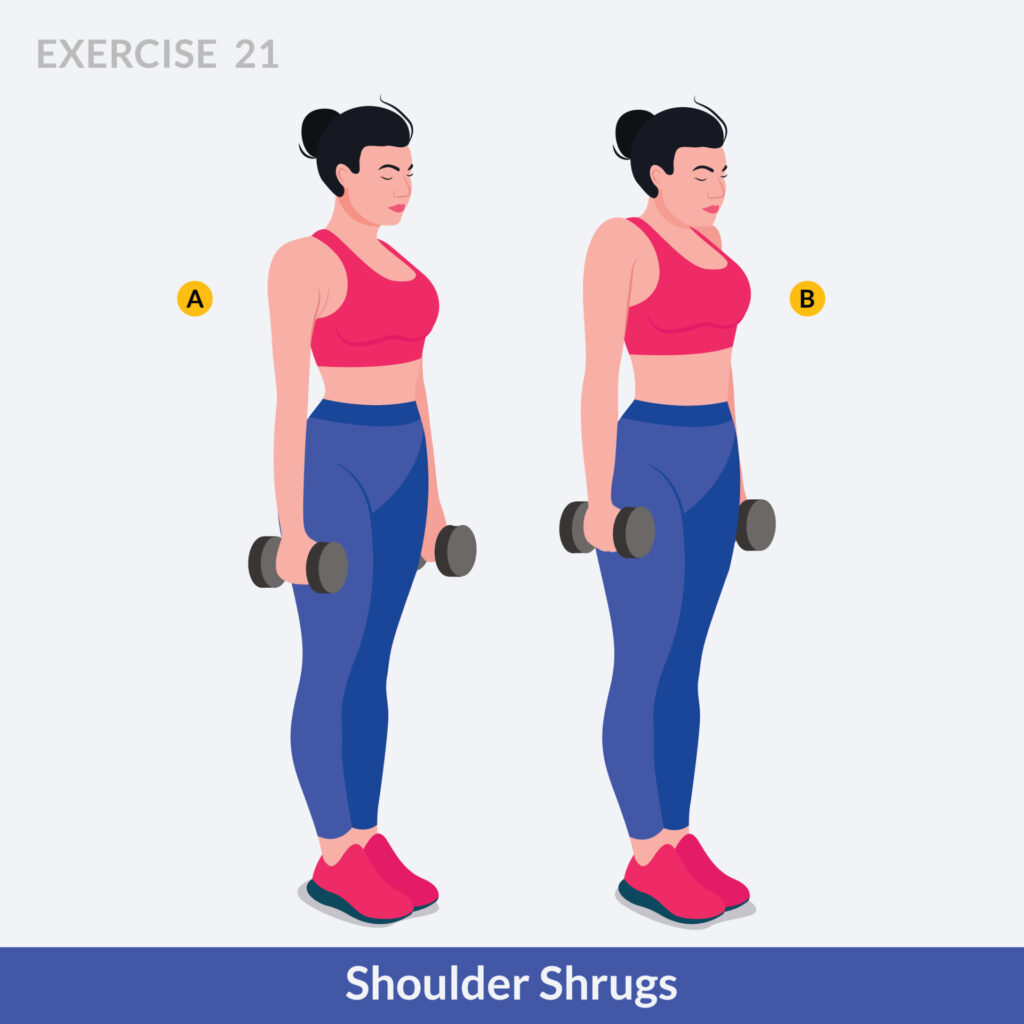
- Rotator cuff stretches are an important exercise for goalkeepers to improve shoulder mobility and reduce the risk of injury. Stand with your feet shoulder-width apart and your arms at your sides. Slowly raise your left arm across your chest, and use your right hand to pull your left elbow towards your chest gently. Hold for 15-30 seconds and repeat on the other side.
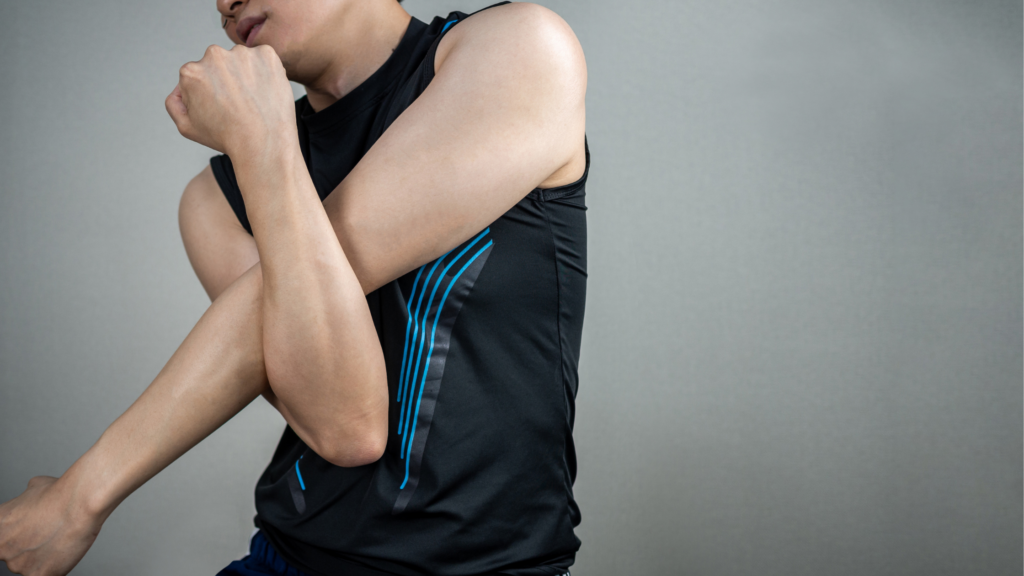
Reducing Goalkeeper Injury Risk through Agility Drills
Goalkeeping requires quick movements and the ability to change direction quickly. Incorporating agility drills such as ladder drills, cone drills, and shuttle runs into your training routine can help improve your footwork and overall agility.
Incorporating Agility Drills into Your Training Routine
- Ladder drills are a popular training method to improve footwork, agility, and coordination. They involve setting up a ladder on the ground and running through it, performing different footwork patterns and movements. To perform ladder drills, first, lay the ladder on the ground and position it in the area where you want to train. Then, start by running through the ladder, placing one foot in each square, and focusing on quick, precise footwork.As you become more comfortable with the drill, you can progress to more complex footwork patterns, such as side shuffles, crossover steps, and high knees.It’s important to maintain good form while performing ladder drills. Keep your chest up, your back straight, and your shoulders relaxed. Also, keep your feet close to the ground, and avoid lifting them too high.
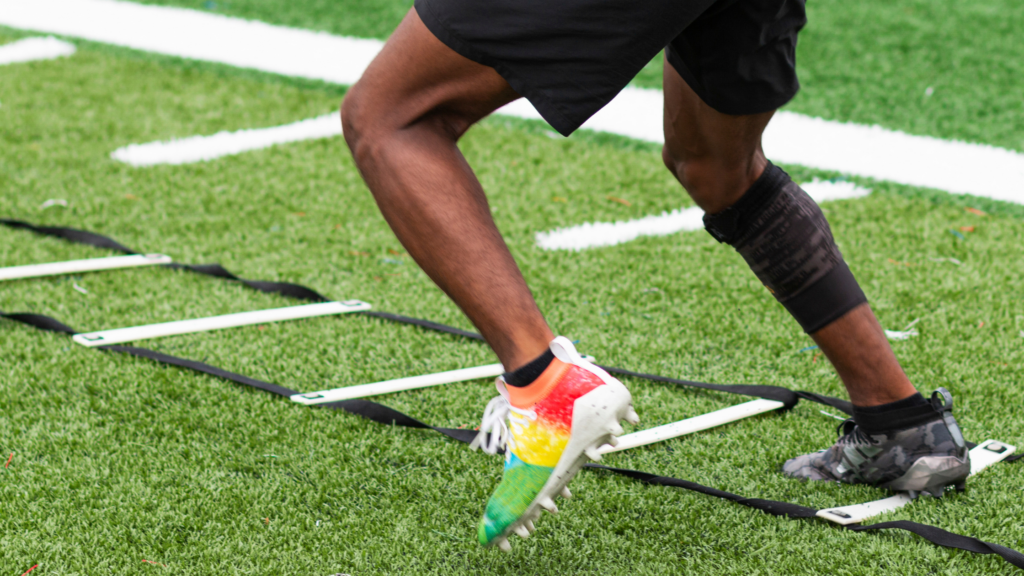
- Cone drills are another great way to improve your agility. Set up cones in a pattern and run through it, focusing on quick, precise movements.
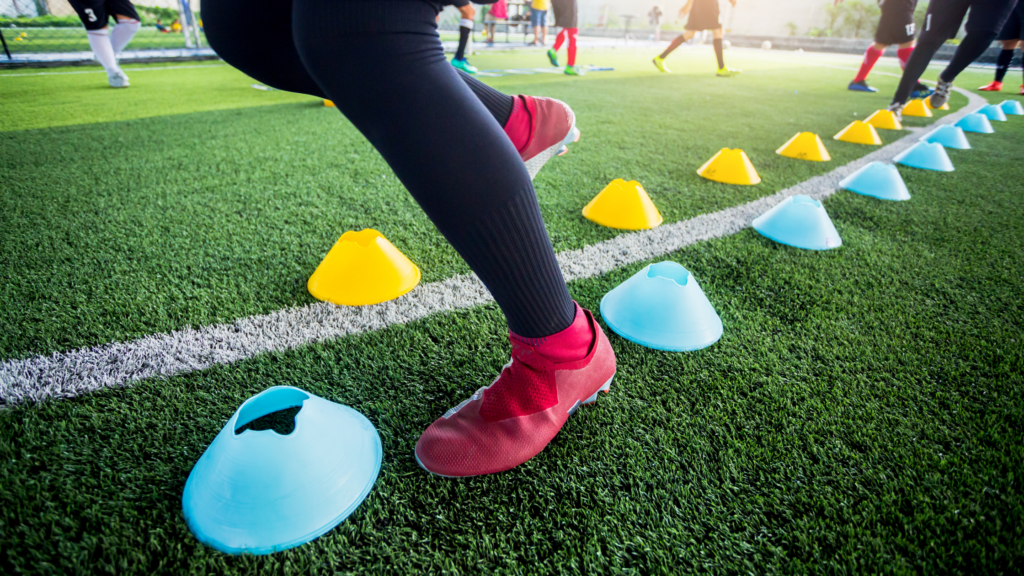
- Shuttle runs are a great way to improve your agility and reaction time. Set up two cones or markers a certain distance apart and run back and forth between them, trying to get as many reps as possible in a given period.
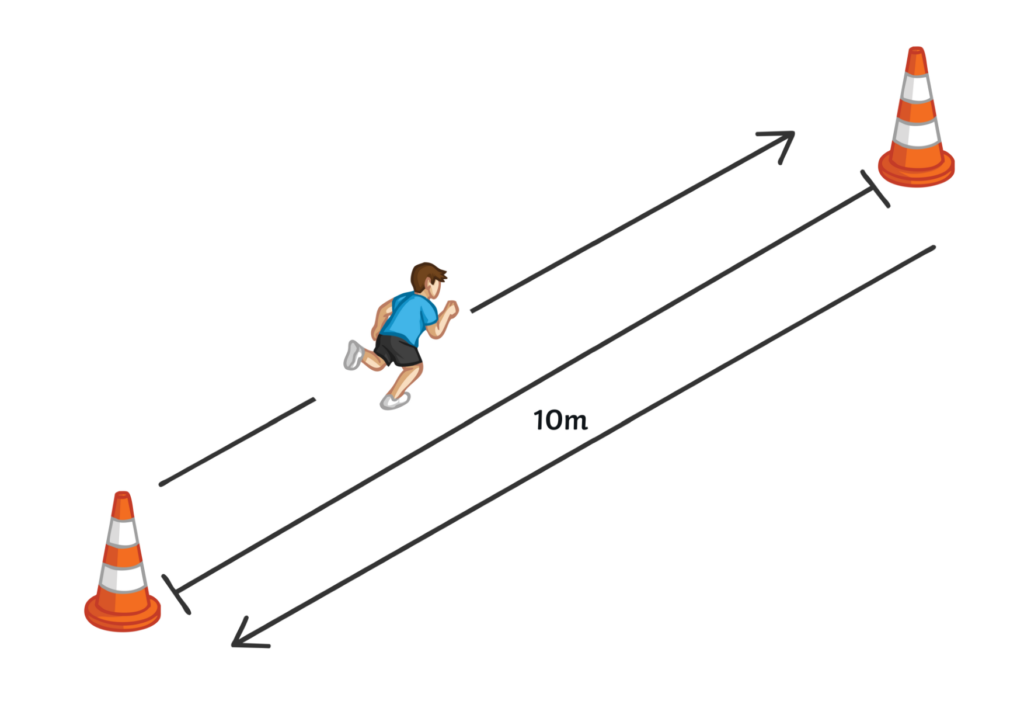
By incorporating these exercises into your training routine, you can improve your footwork, agility, and reaction time, which will help you make faster and more powerful movements on the field, reducing your risk of injury.
Preventing Goalkeeper Injury with Plyometric Training for Explosive Power and Reaction Time.
Preventing Goalkeeper injury requires developing explosive power and quick reaction time on the field. Plyometric exercises such as jump squats and box jumps are great tools to achieve this goal.
These exercises can help you make faster and more powerful movements, reducing the risk of injury for a goalkeeper. Incorporating these exercises into your training routine can be a key factor in becoming a more agile and injury-free goalkeeper.
Incorporating Plyometrics into Your Training Routine
- Jump squats are a great exercise for developing explosive power in your legs. Stand with your feet shoulder-width apart and lower yourself into a squat position. Push through your heels and jump as high as you can. Land softly and repeat for 10-15 reps.

- Box jumps are another great exercise for developing explosive power. Stand in front of a box or bench, lower yourself into a squat position, and jump onto the box or bench. Step or jump back down and repeat for 10-15 reps.
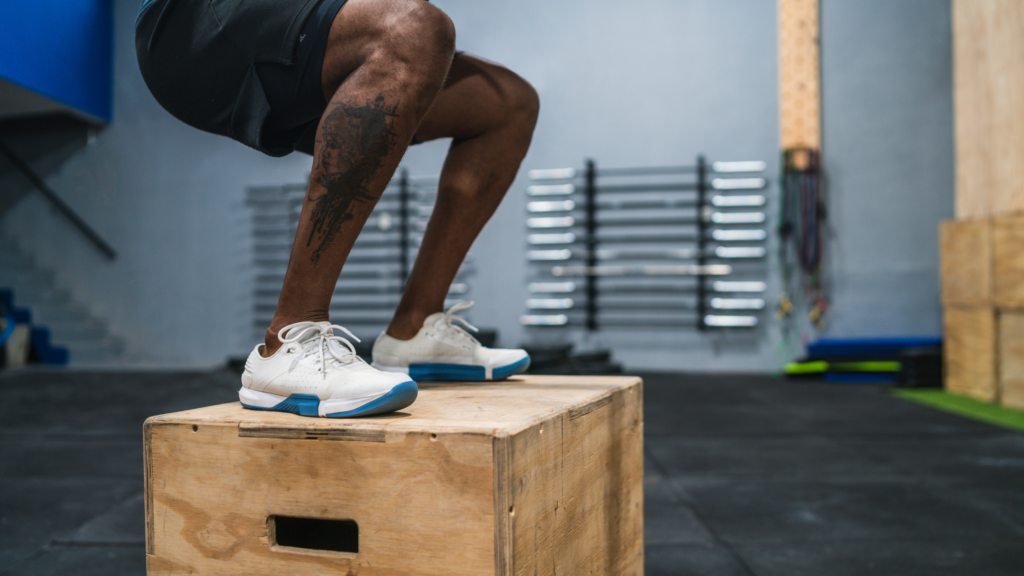
These exercises into your training routine can help improve your explosive power and reaction time, which will help you make faster and more powerful movements on the field, reducing your risk of injury.
Preventing Goalkeeper Injury with Plyometric Training for Explosive Power and Reaction Time
Tight muscles can lead to injuries and impede your performance on the field. Incorporating stretching and flexibility exercises, such as hamstring stretches and quad stretches, into your training routine can help improve your flexibility and reduce your risk of injury.
Incorporating Flexibility into Your Training Routine
- Hamstring stretches are an important exercise for goalkeepers to improve flexibility and reduce the risk of injury. Sit on the ground with one leg extended and the other leg bent. Reach forward and try to touch your toes. Hold for 15-30 seconds and repeat on the other side.

- Quad stretches are another important exercise for goalkeepers to improve flexibility and reduce the risk of injury. Stand with your feet shoulder-width apart and bend your left knee, bringing your heel towards your glutes. Hold onto your left ankle with your left hand and hold for 15-30 seconds. Repeat on the other side.
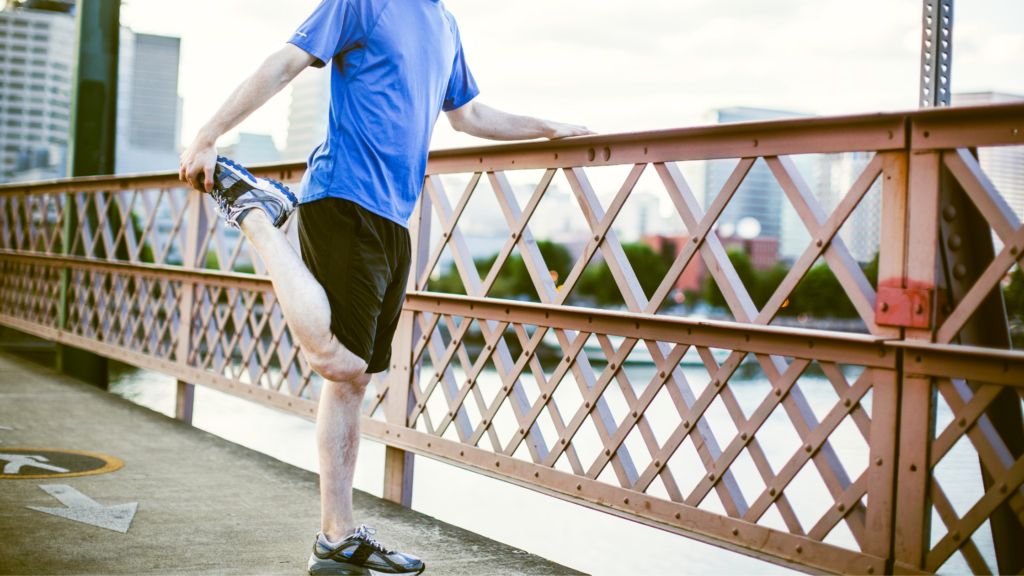
Adding these flexibility exercises into your training routine can improve your flexibility and reduce your risk of injury. Remember to always warm up before training and stretch after training to get the most benefit.
Conclusion
This article discussed the top 5 exercises for preventing football injuries for goalkeepers. Incorporating these exercises into your training routine can improve your strength, mobility, and flexibility, reducing your risk of injuries and allowing you to perform at your best on the field. Always consult a professional trainer or physician before starting any new exercise routine.




